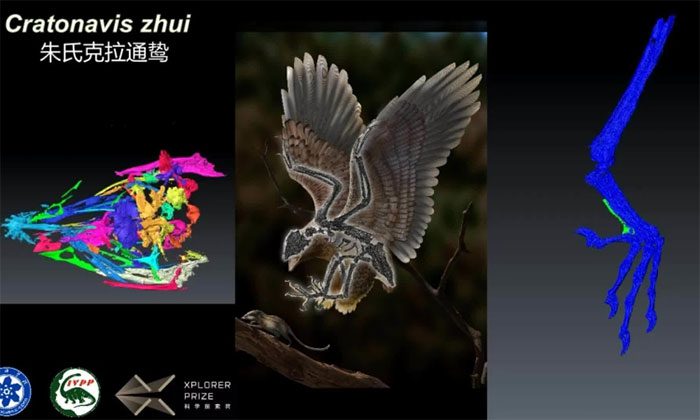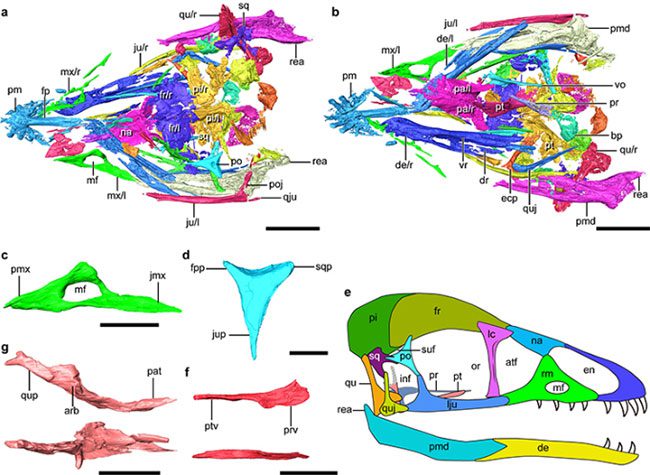Paleontologists have discovered a rare complete skeleton of a bird species that lived during the Cretaceous period, showcasing unusual evolutionary traits.
Today, the hypothesis that birds originated from dinosaurs is widely accepted, yet researchers continue to struggle with understanding how this remarkable evolutionary event occurred. This process is believed to involve some of the most significant morphological, ecological, and functional changes, ultimately leading to the distinctive physical characteristics found in birds.

Fossil of Cratonavis zhui.
Now, a newly discovered 120-million-year-old bird fossil in China adds complexity to this issue by displaying a skull resembling that of a dinosaur, articulated with a body similar to that of birds. Additionally, the fossil specimen, named Cratonavis zhui, preserves unusually long shoulder and foot bones, setting it apart from all other bird species.
Digital reconstruction and photography of the Cratonavis zhui fossil. (Video: Wang Min)
The research published in the journal Nature Ecology & Evolution on January 2 was conducted by experts from the Institute of Vertebrate Paleontology and Paleoanthropology (IVPP) of the Chinese Academy of Sciences.
Cratonavis zhui is positioned between the group of Archaeopteryx (which resembles reptiles more) and the Ornithothoraces birds (which possess many features similar to modern birds) in the evolutionary tree.
To study the fossil skull, scientists first employed high-resolution computed tomography (CT) scanning. They then digitally scanned and reconstructed the original shape and function of the skull.
The results indicate that the skull of Cratonavis zhui closely resembles that of some dinosaur species, such as Tyrannosaurus rex, rather than that of modern birds.
“The primitive skull characteristics indicate that most Cretaceous bird species like Cratonavis zhui were unable to move their upper beaks independently of their skull caps and lower jaws—a functional change widely observed in living bird species, contributing to their vast ecological diversity,” explained Dr. Li Zhiheng from IVPP, the lead author of the study.

The skull of Cratonavis zhui resembles that of the Tyrannosaurus rex more than that of modern birds. (Photo: Wang Min)
Regarding the unusually long shoulder bones of Cratonavis, co-author Wang Min noted that they play an important role in the bird’s flying capabilities, providing stability and flexibility.
“We tracked changes in shoulder bones throughout the transition from theropod dinosaurs to birds and found that the elongated shoulder bones could enhance the mechanical advantage of muscles for flexing/rotating the arm bones, compensating for the underdeveloped flight capabilities in this primitive bird,” Wang stated.
The study also indicated that Cratonavis’s foot bones underwent selective changes during the transition from dinosaurs to birds, resulting in shorter lengths, less than one-fourth the size of the second foot bones. This adaptation eventually lost its evolutionary potential upon reaching optimal size.
According to co-author Zhou Zhonghe, a researcher at IVPP, the unusual morphology of the shoulder and foot bones in Cratonavis highlights the skeletal flexibility in early bird species. Changes in these factors indicate their specific evolutionary capabilities due to interactions among development, natural selection, and ecological opportunities.





















































